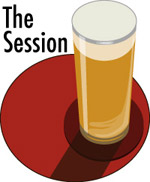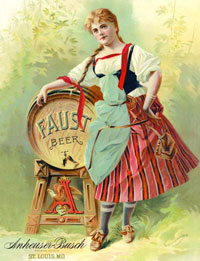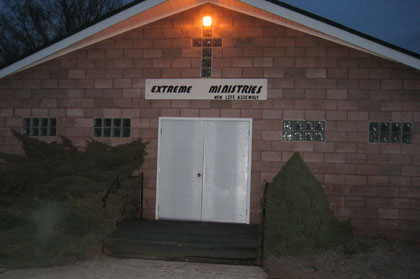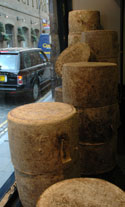 How excited must the people at Anheuser-Busch be about the advent of The Session?
How excited must the people at Anheuser-Busch be about the advent of The Session?
Certainly they must have been disappointed that nobody blogged about Bare Knuckle Stout for the first round of The Session.
Apparently they don’t want to be left out again.
Is it coincidence that Alan McLeod has chosen dubbels as the topic for April 6 and A-B seems to be brewing a beer to that style?
They are. Really. OK, we won’t be looking for it before April 6. Instead of pretending they did it for us it’s time to remove tongue from cheek (thus making it easier to properly taste beer).
Miller’s Brew Blog reports that A-B filed a certificate of label approval application with the Treasury Department’s Alcohol and Tobacco Tax and Trade Bureau for three new beers under the Faust banner. Of course that doesn’t guarantee anything, particularly widespread distribution.
The beers are Faust Belgian Style Dubbel (7% abv), Faust Dortmunder Style Lager (5.5%), and Faust Early American Pilsner (5%). (And how about a collective hmmm for that last one?) The brands are attributed to the Beechwood Brewing Group.
 A-B first created a Faust beer for the Oyster House and Restaurant, naming it for its owner, A. E. Tony Faust (best friend of brewery founder Adolphus Busch). In the 1990s the brewery experimented with a series of specialty beers called American Originals. These included American Hop Ale and a golden colored lager called Faust.
A-B first created a Faust beer for the Oyster House and Restaurant, naming it for its owner, A. E. Tony Faust (best friend of brewery founder Adolphus Busch). In the 1990s the brewery experimented with a series of specialty beers called American Originals. These included American Hop Ale and a golden colored lager called Faust.
The Brew Blog has a long list of other A-B products recently killed or possibly in the works, but these Faust beers look the most interesting.
Even if the Dubbel isn’t in time for what Alan’s calling the “Son of Session.”
 We watched enough basketball over the weekend that once in a while we didn’t manage to hit mute when a commercial came on.
We watched enough basketball over the weekend that once in a while we didn’t manage to hit mute when a commercial came on.
 What do you pair with extreme* beer?
What do you pair with extreme* beer?